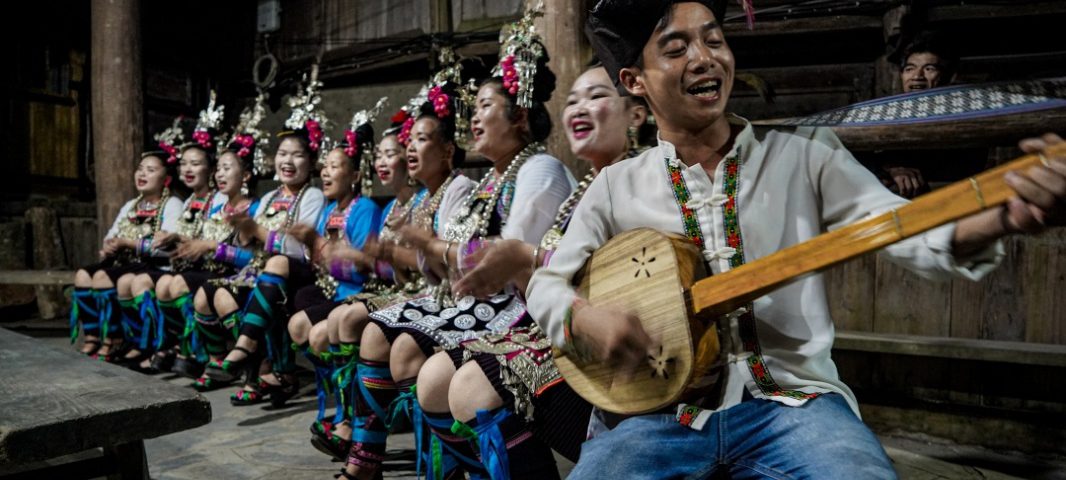This is a sponsored guest post from Ministry of Culture and Tourism of the People’s Republic of China
Discover intangible cultural heritage inspired routes and case studies in poverty alleviation through tourism in China
2020 has been a decisive year for China in its attempts to alleviate poverty and build a shared, prosperous society. One of the increasingly important factors in this goal is the role of intangible cultural heritage and tourism, which, when combined, can create jobs, and improve the lives of people and communities. During WTM Virtual 2020, the China National Tourist Office, London focus on introducing intangible cultural heritage tourism routes and case studies in poverty alleviation through tourism, to introduce the world to ‘Wider China’; diverse cultures, folk customs, multi-ethnic integration and intangible cultural heritage outside of China’s well-known cities.
Intangible Cultural Heritage Inspired Tourism Products
We are excited to showcase 12 cutting-edge intangible cultural heritage inspired tourism routes, which explore regional specialities and national intangible cultural heritage, and have a focus on truly authentic, experiential tourism that meet the needs of the modern, conscious traveller. The 12 routes are:
- ‘The Intangible Cultural Heritage of Beijing’s Central Axis’
- ‘The Culture and Scenery of Inner Mongolia’s Qianli Grassland’
- ‘Intangible Cultural Heritage in a She Minority Township, Zhejiang Province’
- ‘Hui Intangible Cultural Heritage in Anhui Province’
- ‘The Spirit of Mountains and Water: Intangible Cultural Heritage in Shandong Province Part 1’
- ‘The Intangible Cultural Heritage of the Lu Canal, Shandong Province Part 2’
- ‘Legends of Chinese History: Zhaojun and Qu Yuan’
- ‘The New and the Old: Cultural Heritage in Guangzhou’
- ‘Intangible Cultural Heritage on the Sino-Vietnamese Border’
- ‘An In-depth Experience of Dong Intangible Cultural Heritage in Southeast Guizhou Province’
- ‘A Symphony of Intangible Cultural Heritage on the Silk Road, Gansu Province’
- ‘The Intangible Cultural Heritage of the Yellow River, Gansu Province’
- ‘The Intangible Cultural Heritage of Kashgar, Xinjiang Uygur Autonomous Region’
Along these routes, you can experience the art of silk in Beijing, learn about the construction of a yurt in Inner Mongolia, uncover the history of Hui ink and Hui carving, hear the majesty of a Dong ethnic minority song, get lost in Cantonese Opera in Guangzhou and much more. These routes capture the magic of combining vivid intangible cultural heritage with breath-taking scenery. Crucially, they also play an important role in the inheritance and promotion of China’s wonderfully varied intangible cultural heritage, breathing new life into cultural traditions that may otherwise be lost and improving the lives and environment of local craft practitioners and ethnic minority communities.
Inspiring Case Studies in Poverty Alleviation Through Tourism
Tourism has become a key tool in global efforts to reduce poverty, serving as an effective means of developing local economies and increasing employment. Over the last 40 years of reform and opening up in China, more than 700 million people have been lifted out of poverty, and tourism has become particularly important in addressing poverty in rural areas. Across the 3 days of WTM Virtual, we are sharing 9 case studies that celebrate such success stories.
These case studies have demonstrated striking results in alleviating poverty in rural regions, towns, and villages, leaving behind a sustainable economic system, increased employment, improved infrastructure and facilities, and more. They have achieved this whilst protecting the surrounding ecology and environment and opening up exquisite scenic areas for new generations.
Studying these case studies is also an opportunity to discover new provinces, regions, towns, and villages that are lesser-known and currently hidden gems to Western travellers. Each one has its own unique characteristics and resources, but their common thread was once poverty. Through the development of the tourism industry, they are now shining stars waiting to be explored.
The 9 case studies are:
- the Bashan Grand Canyon Scenic Area of Xuanhan County, Dazhou City, Sichuan Province, which effectively combined cultural tourism with ecological protection
- Daocheng County, Garze Tibetan Autonomous Prefecture, Sichuan Province, which utilised a customised version of the tourism + poverty alleviation model
- Leishan County, Qiandongnan Miao and Dong Autonomous Prefecture, Guizhou Province, which vigorously developed rural tourism to eradicate poverty in ethnic minority rural villages
- Gannan Tibetan Autonomous Prefecture, Gansu Province, which unlocked its potential in 2 areas and developed a successful eco-tourism model that supported local farmers and cooperatives
- Xishanhou Village, Weihai City, Shandong Province, which had enormous success in helping very poor villagers
- Doushahe Village, Huoshan County, Liu’an City, Anhui Province, where high-end eco-tourism was developed
- Xiajiang Village, Chun’an County, Hangzhou City, Zhejiang Province, which overcame historical poverty in the region by opening up the surrounding scenic attractions and empowering grassroots organisations
- Xuan’en County, Enshi Tujia and Miao Autonomous Prefecture, Hubei Province, which successfully integrated its urban and rural attractions to increase income and support locals.
Through these vivid case studies, you can feel how much of a difference tourism can truly make, both in China and across the world.
China National Tourist Office, London
Follow CNTO London online on Facebook, Twitter, Instagram and YouTube.


